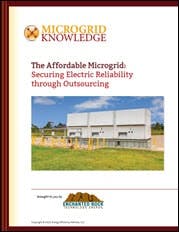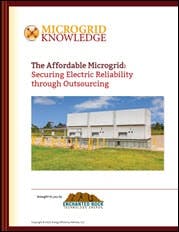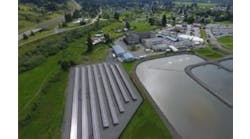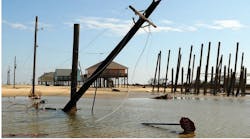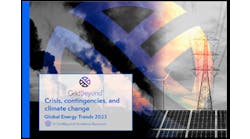Microgrids in Texas proved their worth during Hurricane Harvey, as described in this final entry of a six-part Microgrid Knowledge Special Report Series on the rise of the reliability-as-a-service model and the onset of the affordable microgrid.
Download the full report.
Hurricane Harvey left Texas with $125 billion in damages, record rainfall, flooding that displaced 30,000 people, and destruction of more than 200,000 homes and businesses.
After the Category 4 Hurricane struck Aug. 25, 2017, Houston looked like little more than an inland sea dotted with islands, according to the New York Times.
In all, the hurricane caused 91 confirmed deaths.
But even as Harvey made its name as one of the most destructive storms in U.S. history, at the time second only to Hurricane Katrina, there was some good news. Twenty-one grocery stores and gas stations were able to continue to provide food, fuel and water to beleaguered storm victims.
Those who found the H.E.B. and Buc-ee’s stores open were probably unaware that they were witnessing the demonstration of microgrid technology that energy insiders believe will help keep us safe as climate change leads to increasingly severe weather.
As more than a quarter of a million homes and businesses struggled in the dark, three Buc-ee’s and 18 H.E.B. stores still had power, thanks to Enchanted Rock (ERock). In doing so, the stores were able to serve as an important community resource.
The Texas-based microgrid company describes its mission as “keeping businesses in business by ensuring electrical reliability.” But it did more than that as flood waters poured into Houston. ERock also discovered it was inadvertently in the business of helping rescue workers stay in business too.
Trying to coordinate rescue efforts during a power outage is a daunting task. Fortunately, workers found an electrified base of operations from which they could work: A Buc-ee’s store in Katy, Texas, remained open because of its ERock microgrid. The region was heavily flooded, and many residents were forced to evacuate. But a National Guard unit, a search-and-rescue team and several state agencies were able to operate out of the store.
“Buc-ee’s was honored to host the first responders and national guardsmen at our Katy store during the recent disaster caused by hurricane Harvey. We were confident that our ERock generators would keep the lights on,” said Jeff Nadalo, Buc-ee’s general counsel.
Conclusion
Electricity is critical to our safety and well-being as digital technology governs more and more of our world. But severe storms, wildfires, equipment failure, and cyberattacks threaten to undermine the reliable flow of electricity. The time has come for more widespread implementation of the affordable microgrid.
The reliability-as-a-service model innovation leads the way for affordable microgrids by minimizing upfront capital costs for businesses and institutions that seek greater reliability. This model has the potential to make electrical resiliency accessible to 100x the number of commercial, industrial and institutional customers, while allowing the integration of renewable energy sources — reducing economic and community impact like never before.
This six-part Microgrid Knowledge Special Report Series also previously covered the following topics:
- Microgrid Installation Before Calamity: Resiliency Planning
- Putting a Value on Electric Reliability for Your Operation
- Reliability-as-a-Service: What is an Affordable Microgrid?
- Natural Gas-Fired Microgrids Tout Advantages Over Other Energy Sources
- Leveraging Wholesale Markets to Create the Affordable Microgrid
We welcome you to download this special report, “The Affordable Microgrid: Securing Electric Reliability through Outsourcing,” free of charge, courtesy of Enchanted Rock, and to widely distribute the link.
